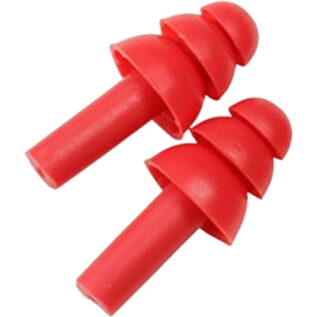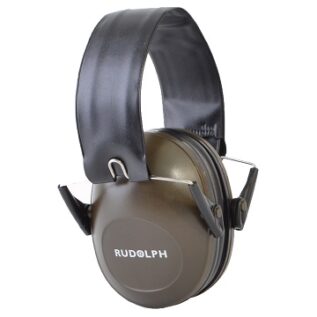SportEar Silicone Earplugs
R129The SportEar Silicone Earplugs is a handy accessory for avid shooters.
Showing 51–53 of 53 results

The SportEar Silicone Earplugs is a handy accessory for avid shooters.

The Rudolph Electronic Protective Ear Muffs offers premium sound quality for the greatest experience while protecting your ears from damaging loud noise.

The Rudolph Passive Protective Ear Muffs offers premium sound quality for the greatest experience while protecting your ears from damaging loud noise.
Shooting is a fun and engaging activity, but it can be incredibly loud and damaging to your hearing. To prevent hearing loss or damage, it is essential to wear ear protection while shooting. In this article, we will discuss how to choose ear protection for shooting, including different types of ear protection, important factors to consider, and common mistakes to avoid.
There are two main types of ear protection: earplugs and earmuffs. Earplugs are small, disposable plugs that fit inside your ear canal, while earmuffs are larger, over-ear devices that cover your entire ear. Both types of ear protection offer excellent protection, but they have different advantages and disadvantages.
Earplugs are small, lightweight, and portable. They are easy to insert and remove, and they do not interfere with your shooting form or the fit of your glasses. However, earplugs can be challenging to insert correctly, and they may not fit properly in everyone's ears. They also tend to provide less protection than earmuffs.
Earmuffs are larger and bulkier than earplugs, but they provide more significant protection. They are easier to put on and take off, and they do not require any special fitting. They also provide additional protection from impact and debris. However, earmuffs can be uncomfortable to wear for long periods, and they may interfere with your shooting form or the fit of your glasses.
When choosing ear protection for shooting, there are several important factors to consider.
The NRR is a measure of how effectively ear protection reduces noise. The higher the NRR, the more significant the noise reduction. For shooting, you should choose ear protection with an NRR of at least 25 dB.
Comfort is essential when it comes to ear protection. If your ear protection is uncomfortable, you will be less likely to wear it consistently. Look for ear protection that fits well and feels comfortable, even when worn for extended periods.
If you wear glasses or other shooting accessories, make sure your ear protection is compatible with them. Earmuffs can interfere with the fit of glasses or hats, while earplugs may not fit correctly with ear-mounted accessories.
Ear protection can take a beating over time, so it's essential to choose a durable product that can withstand wear and tear. Look for ear protection that is made of high-quality materials and is designed to last.
When choosing ear protection for shooting, there are a few common mistakes to avoid.
Using inadequate ear protection, such as foam earplugs, can put your hearing at risk. Make sure to choose ear protection with an NRR of at least 25 dB.
Ear protection only works if you wear it consistently. Make sure to wear your ear protection every time you shoot, even if you're just shooting a few rounds.
Ear protection that does not fit properly can be uncomfortable, ineffective, and dangerous. Make sure to choose ear protection that fits well and is designed for your specific needs.

PAYMENTS ARE INTEREST-FREE WITH NO DEPOSIT REQUIRED. #CHOOSEHAPPY
Add items to your cart.
Choose

Enter your payment details & payday.
Your first payment (50%) is made on your first payday post-purchase and the second payment (50%) is made on your next payday thereafter.